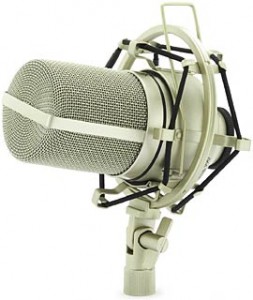Home Recording
posted in: Features

Music Clout has published a pretty good and succinct article with some home recording tips. We see these kinds of things from time to time, but this one is pretty direct, and we like that they appreciate the good over the perfect. Here’s the meat of the thing:
Plan it out – If you’re just going to lay down some drum tracks, the keyboard player doesn’t have to be there. Make a recording plan that makes the most efficient use of everybody’s time. Don’t plan vocal recordings unless every supporting instrument has been laid down. Most of the time, tracks are recorded linearly on top of each other. That’s why you shouldn’t record the bass until the drums are down and tight.
Tune after every take – There’s nothing worse than a great performance that’s out of tune. You’ll never be able to fix it. So prevent your amazing takes from being thrown in the trash. Tune after every take.
Use simple recording techniques – Stick with mono microphone techniques. Don’t over-complicate things. Move the microphone around until you think the instrument sounds good. You won’t have a great ear for this immediately, but keep recording and you’ll develop a sense for where to point the mic.
It’s about the performance – Minor sound issues pale in significance to the power of a great performance. I would pick lackluster equipment but a great performance over a million dollar studio with terrible musicians any day of the week.
Here’s what we can add to this. When you’re thinking about gear, it’s easy to get overwhelmed, especially if you’re picturing the last pro recording studio you were in, with racks of gear and huge mixing desks. You don’t need all that stuff. For the most part, you’re going to be in great shape if you have a computer, recording software, an interface (where you plug your mic in), two solid mics, a pair of good preamps, and maybe one or two compressors (plus mic stands, cables, etc, of course). When you compare the cost of decent gear to the cost of recording in a studio, you’ll realize that, while not cheap, the gear is going to end up being cost effective. Spend $500-800 on a pair of preamps instead of two days in the studio. It’s the gift that keeps on giving…to yourself.
We really think the best way to optimize your recordings on a budget is to invest in a day or two at a studio and record your drums there, then do everything else at home. The drums are the one thing that almost certainly requires more than a pair of mics and more than two inputs. Everything else, you can get away with one or two. But if you are going to do it all at home, don’t try to record a whole band at one time. If you’re tracking drums, just focus on the drums. You can play along to guide the drummer (try a Line6 Pod or other direct modeler, or just a DI box, and go direct with a guitar) – treat this as a scratch track that you’ll re-record later.
Don’t treat mixing as some separate, mysterious process. Mix as you go, as best you can. Find a few basic plugins that you like, for whatever software you’re using. You’ll need EQ, ‘dynamics’ (compression and limiting), and some reverb or delay. Play around with them to get the sound right after you’ve tracked it. Again, consider that pro mixing might be a worthwhile investment, but barring that, don’t take a ‘fix it in the mix’ attitude toward your tracking. Google a couple of articles to get EQ ideas. Start with some presets for compression.
And have someone else master it when you’re done. Can’t fake that part.
